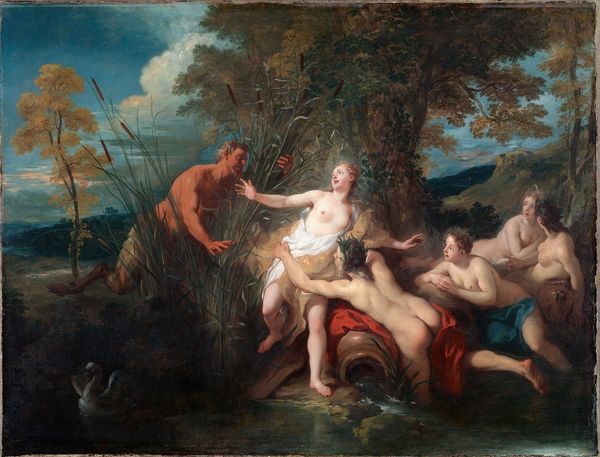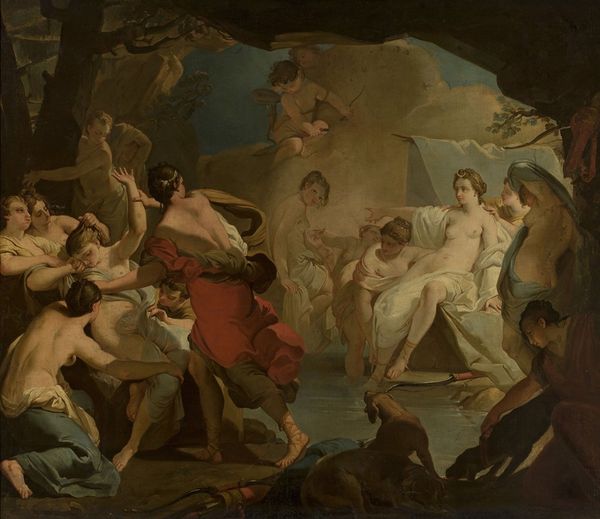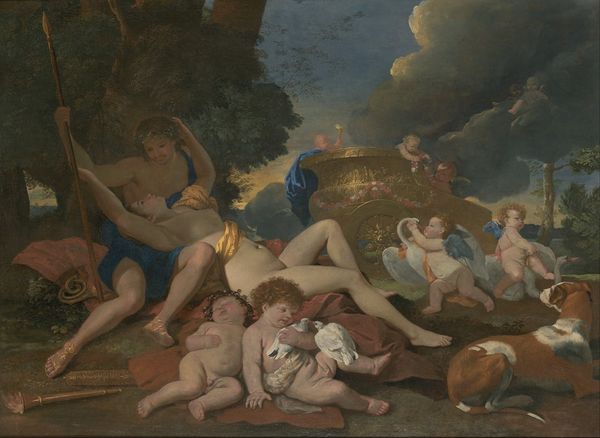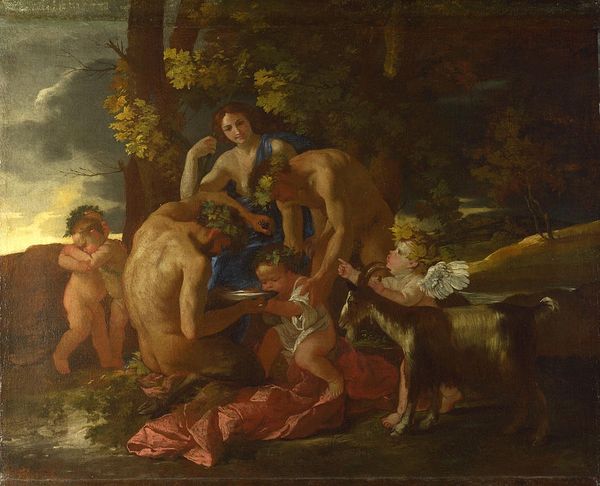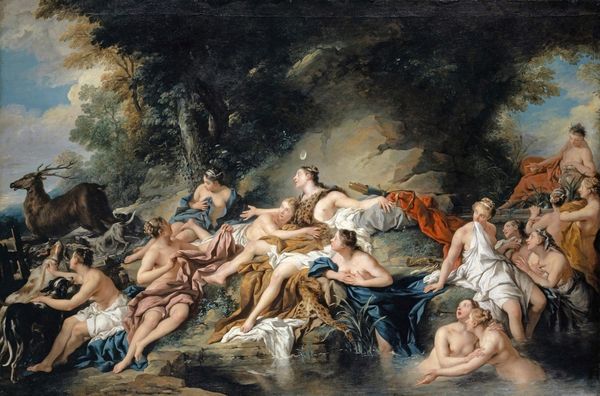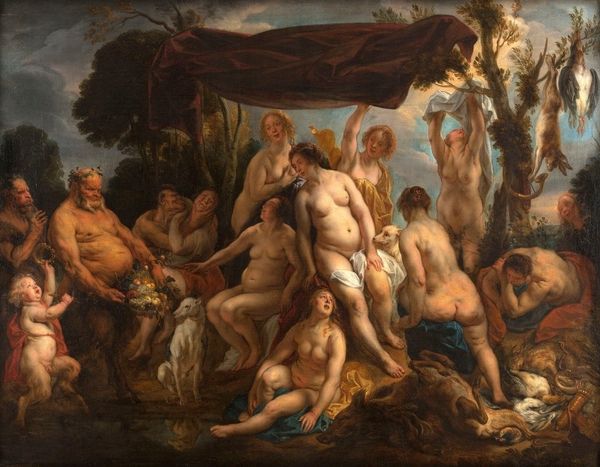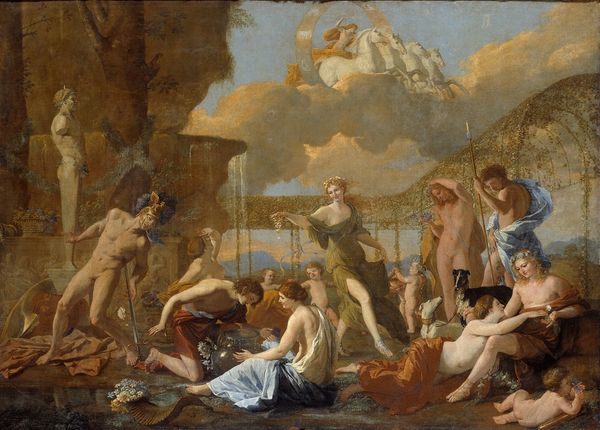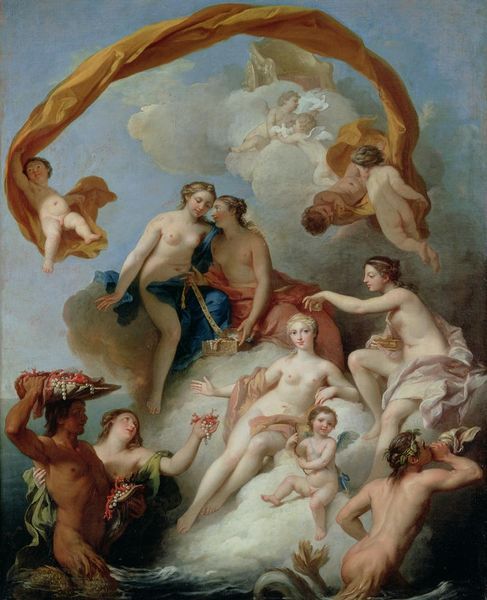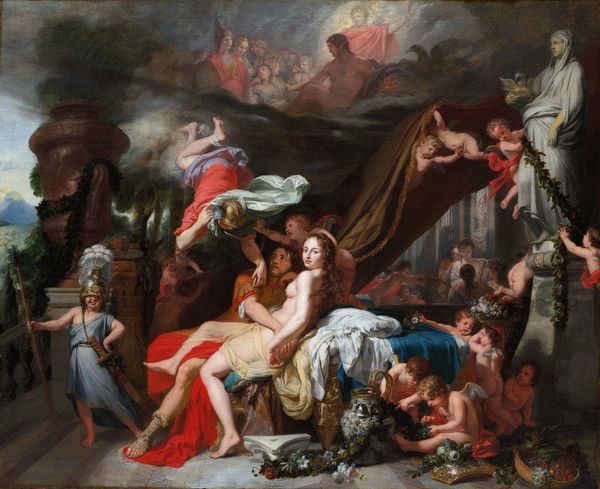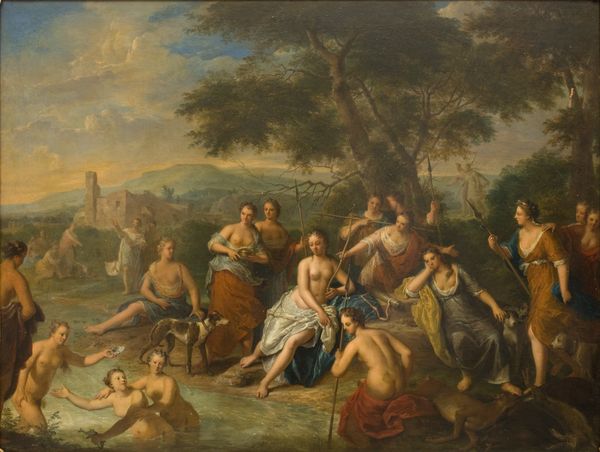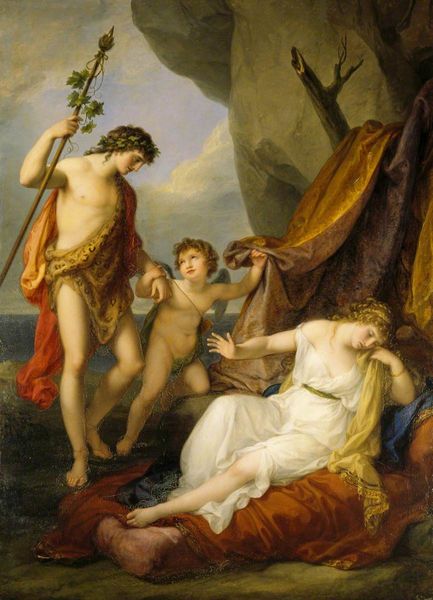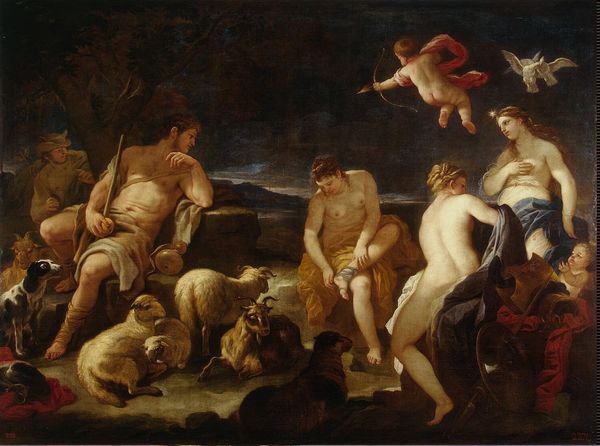
oil-paint
#
baroque
#
oil-paint
#
landscape
#
figuration
#
oil painting
#
mythology
#
history-painting
Copyright: Public Domain: Artvee
Editor: So this is Nicolas Poussin’s “The Childhood of Bacchus,” painted around 1630 in oil. The figures seem to be frozen in this shadowy glade, their faces so serene, almost indifferent. What draws your eye when you look at this piece? Curator: The lasting power of this imagery. Even today, centuries later, the symbols associated with Bacchus – the grapes, the overflowing vessels, the satyrs themselves – conjure ideas of revelry, abandon, and a connection to the wild, untamed aspects of nature and humanity. Where do *you* think these symbols originate? Editor: Well, the obvious source is the classical myths themselves, but why do these specific symbols endure? Curator: Precisely. It’s about cultural memory, isn't it? Poussin isn’t just painting a scene, he's evoking a whole lineage of representation, harking back to ancient Greece and Rome. He uses these established symbols as cultural shortcuts to access complex ideas about ecstasy, fertility, and the cyclical nature of life, death, and rebirth. Notice how he contrasts the unruly satyrs with the refined postures of the nymphs? What do *they* tell you? Editor: I suppose it's a way of taming or framing that wildness, a sort of civilizing influence. Curator: An ordering, even. Poussin, deeply influenced by classical ideals, might be suggesting a controlled channeling of Dionysian energy, shaping it into something beautiful and life-affirming, rather than destructive. It seems, however, that Bacchus is being entrusted to, and even drawing comfort from nature itself, and a pastoral scene in his most vulnerable infancy. I believe Poussin alludes to, that, even through Bacchus may come wine and revelry, that a human must still look to Nature itself to become complete. It makes one really think about how humans engage with this, even in our own age. Editor: I hadn’t considered it that way, focusing on this aspect. The dialogue between wildness and order makes the scene feel so dynamic. Curator: Exactly, a push and pull reflected in the image that reveals larger cultural truths about us as humans in relation to nature. A thought-provoking reflection through visual imagery.
Comments
No comments
Be the first to comment and join the conversation on the ultimate creative platform.
